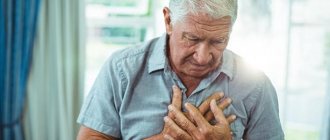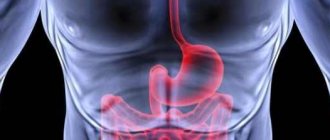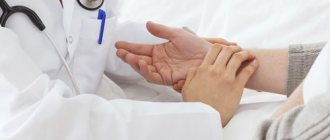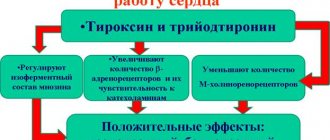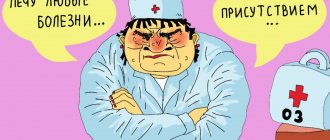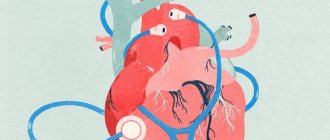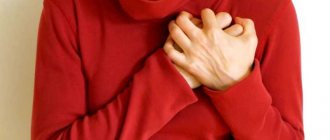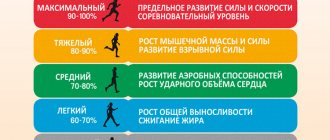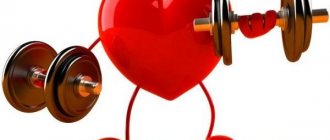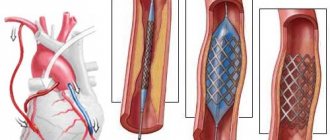What is vegetative-vascular dystonia?
Many patients are diagnosed with VSD. This disease is considered a pathology of the myocardium and blood vessels. However, after examinations, no disturbances in the functioning of these organs are detected in a person. What explains this circumstance? The fact is that vegetative-vascular dystonia is associated with a disorder of the functions of the nervous system. Improper functioning of the ANS leads to unpleasant sensations in the myocardium and blood vessels. Do heart pains with VSD pose a threat to the patient’s life? Fortunately, in this case, discomfort does not indicate the presence of a dangerous condition. When visiting a doctor after examinations, many people diagnosed with “vegetative-vascular dystonia” notice that the specialist ignores their health problems. However, such patients should not be ignored. After all, discomfort in the myocardial area not only contributes to the emergence of feelings of fear and panic attacks, but also significantly complicates the patient’s life.
Pathological types of pain
How to distinguish pathological pain from harmless pain that occurs due to dysfunction? The fact is that this is difficult to do due to the great similarity with pain in diseases of the cardiovascular system. Only a comprehensive examination allows us to understand what actually caused it. It combines cardiograms, ultrasound, magnetic resonance imaging, laboratory tests and other necessary tests.
Pathological types include pain characteristic of:
- Myocardial infarction. It is quite specific, spreading not only to the chest, but also to the neck, shoulder blade, and left side of the limbs. Nitroglycerin may not help here, and the person becomes covered in cold, sticky sweat, and may be plagued by a dry cough, shortness of breath and panic. He can rarely show the location of the pain. The attack lasts over 15 minutes. Atypical cases may be accompanied by a complete absence of pain.
- Angina pectoris. Here, more acute or dull, it originates in the area behind the sternum and moves to the left shoulder blade. A person here also feels a lack of air, sometimes the pain loses its clear localization. Painful sensations can last only a few seconds, sometimes this period increases to 20 minutes. Symptoms of VSD are not limited to chest discomfort.
Characteristic signs of VSD
Vegetative-vascular dystonia develops as a result of an incorrect reaction of the ANS to environmental factors, physical and mental stress. Moreover, the manifestations of pathology can be different. Some patients experience increased blood pressure and increased heart rate.
Others suffer from muscle weakness, hypotension, a feeling of exhaustion and a depressed emotional state. Vegetative-vascular dystonia is a chronic disease. This means that the patient periodically experiences crises, which are accompanied by a deterioration in health. Such exacerbations manifest themselves in the form of tachycardia, cephalgia, and a feeling of weakness. Heart pain with VSD is also a characteristic symptom. They can occur in an individual from time to time under the influence of various factors.
Causes of discomfort
Many people suffering from vegetative-vascular dystonia try not to pay attention to its manifestations. They explain the periodic malaise due to physical or emotional overload. For the same reason, patients ignore slight discomfort in the myocardium. Some people postpone a visit to a specialist until severe pain in the heart appears due to VSD and symptoms of complications (increased blood pressure, vascular pathologies). The occurrence of unpleasant sensations is associated with many different factors. Experts cite the following as the main causes of myocardial discomfort:
- Physical strain (carrying heavy objects, long walks or intense sports).
- Emotional turmoil. Since the pathology is psychosomatic in nature, unpleasant experiences lead to the development of panic attacks. They are accompanied by discomfort in the myocardium and dizziness.
- Lack of oxygen and lack of sleep. Sometimes, if pain occurs in the heart area during VSD, to eliminate the symptom it is enough to ventilate the room well and get a good rest.
- Malfunctions of the myocardium.
- Climate change and strong temperature changes.
- Neuralgia.
- Degenerative changes in intervertebral discs.
- Drinking large amounts of alcohol-containing drinks. This circumstance leads to the appearance of arrhythmia.
- Hormonal imbalances in the female body. Such conditions include premenstrual syndrome.
Features of treatment
As a result of such disorders, a person can develop not only neuroticism, but also a full-fledged syndrome with all the signs of a disease caused by psychosomatics. As a rule, a visit to the doctor in such cases ends with a recommendation to avoid stress and the prescription of Corvalol as a sedative. And this does not suit many patients, because in the absence of a danger to life, this disease can negatively affect a person’s ability to work.
If a person often experiences panic attacks, sleep problems, anxiety and irritability, then the attending physician may prescribe him to take Phenazepam. To return to normal functioning, some patients may be prescribed drugs such as Phenibut or Gidazepam. Salbutiamine also has good indicators of vegetative correction. This is a new remedy that has a pronounced anti-asthenic effect.
As accompanying therapy, the patient may be offered the following measures:
- working with a psychologist to reduce stress;
- acupuncture, which has a calming effect;
- changes in lifestyle and diet.
Other signs of illness
In addition to heart pain with VSD, the symptoms of this pathology include the following:
- Changes in heart rate.
- Cephalgia and dizziness.
- Sharp fluctuations in blood pressure.
- Noise and ringing in the ears.
- Decreased ability to work, deterioration of attention and memory.
- Feeling overwhelmed.
- Unreasonable increase in temperature.
- Fluctuations in the emotional background.
Many patients with a similar illness are concerned about why the heart hurts with VSD. The appearance of discomfort may be explained by the peculiarities of the pathology.
Categories of vegetative-vascular dystonia and their impact on myocardial function
There are two common types of the disease. These are hypertonic and hypotonic types. Each of them has a certain effect on a person’s well-being. In the first case, blood pressure increases and spasms of blood vessels and muscles appear. Discomfort in the myocardium is due to the fact that the organ does not receive enough oxygen. In addition, its tissues are deprived of the ability to get rid of harmful substances. The hypotonic type of pathology also contributes to the occurrence of unpleasant sensations. They, as in the first case, are explained by a lack of oxygen and the accumulation of toxic compounds in the cells. However, this disease is characterized by other symptoms (muscle aches, decreased blood pressure).
The relationship between disease and heart
Vegetovascular dystonia is a functional phenomenon that occurs due to improper functioning of the autonomic nervous system (ANS). Traditional targets are blood vessels and the heart - they are the first to respond to untimely signals from the “center”.
Normally, a person does not feel like:
- internal organs function;
- secretion of digestive juices occurs;
- peristalsis works.
However, almost everyone feels the acceleration of heart contractions and the occurrence of interruptions in its work. Because of this, the slightest changes in the functioning of the main “pump” immediately force one to listen for unusual details.
Such control of one’s own well-being provokes anxiety, fear for life and further aggravates the symptoms.
The nature of the discomfort
What pain in the heart can a person experience with VSD? First of all, the characteristics of the manifestation of discomfort depend on blood pressure.
If it is elevated, pain occurs in the chest, shortness of breath, swelling of the extremities, and a feeling of pulsation in the head are observed. The skin of the face takes on a reddish tint. This symptomatology is caused by spasms of the walls of blood vessels. Hypotension, on the contrary, is accompanied by relaxation of the arteries and veins, as a result of which the blood supply to the tissues sharply slows down. A person feels compression in the myocardium. Breathing becomes rapid. The patient has a headache and a feeling of weakness. Heart rate becomes uneven. A strong decrease in blood pressure can lead to an attack of vomiting.
Mechanism of pain
The presence of ANS dysfunction determines the features that cause pain:
- The predominance of the tone of the sympathetic (tachycardia) or parasympathetic (vagus) nervous system.
- Psychological disorder. The person becomes anxious, fears deterioration in health, and avoids social activity. The slightest tingling near the heart requires immediate treatment.
All this aggravates the clinical picture and, as a result, leads to a panic attack.
Different types of discomfort
There are several types of heart pain with VSD. These include:
- Discomfort of a cutting or piercing nature. As a rule, it occurs suddenly, in the form of attacks. Provokes a feeling of fear.
- Sensation of compression. Usually not pronounced. This discomfort has been present for a long time. May cause anxiety and depressed emotional state.
- An ailment that combines the above types of pain. Unpleasant sensations are characterized by varying intensity.
Is palpitations just a feeling of discomfort or can it be dangerous?
Palpitations need to be assessed on a case-by-case basis, but it is still a problem that can be serious. Because when the beat increases sharply, the heart can no longer perform its function of “pumping” blood. This can lead to a decrease in the amount of blood that reaches the brain. But if the reduction in blood flow becomes almost complete or lasts too long over time, damage can occur that becomes permanent.
Fundamental principles of first aid:
- Stop any kind of activity. The person needs to take a sitting or reclining position. The surface must be horizontal. Any wardrobe items that restrict breathing should be gotten rid of or unbuttoned.
- It is important to provide access to fresh air. To do this, it is not necessary to open all the windows in the apartment. You can open the window slightly or open the window.
- Nitrates should be placed under the tongue. In our country, this is most often Nitroglycerin. A good way to prevent a heart attack is to take an aspirin tablet. For persistent pain, medications are taken 3 times with an interval of 5 minutes.
- Measure your pulse. If the obtained value exceeds 110 per minute, if there are no corresponding contraindications, it is important to quickly drink Anaprilin.
- Timeliness is the fundamental principle of first aid for heart pain. If all the necessary measures were carried out in the first half hour, negative consequences are most likely to be avoided.
As soon as the patient’s condition returns to normal, it is necessary to see a cardiologist as soon as possible. A referral to a doctor will allow you to assess your heart condition, avoid recurrent attacks and maintain your health and quality of life.
Options for the course of a crisis in vegetative-vascular dystonia
The discomfort that occurs in patients with this pathology can manifest itself as follows:
- In the form of a feeling of squeezing in the chest area. Such patients are helped by taking medications with a calming effect (valerian or menthol). And, although an unpleasant feeling in the area of the heart muscle may be present for quite a long time, patients retain the ability to work.
- Burning sensation. Sometimes it is so strong that a person goes to the doctor.
Drugs such as Validol and Valocordin do not improve the patient’s well-being. - Attacks of discomfort, which are accompanied by respiratory disorders, increased sweating, and increased heart rate. If your heart hurts badly during VSD, you should not postpone your visit to a medical facility. Such a complex of symptoms may indicate the presence of serious myocardial pathologies. The patient needs examination.
Heart pain with VSD: how to distinguish it from signs of other ailments?
Such discomfort is characterized by certain properties. Knowing them, you don’t have to worry about the patient’s condition and his life. As signs that are present in VSD, but are not detected in the case of other pathologies, experts call:
- Unpleasant sensations lasting from 10 to 15 minutes. They arise after strong experiences. Taking medications like Validol helps improve the condition.
- Burning sensation.
- Mild discomfort over a long period (from two to three hours to several days).
- Unpleasant sensations do not depend on the presence of physical activity.
- The patient's well-being improves after taking medications with a sedative effect. Yoga and meditation techniques also help him.
It should be remembered that pain in the heart during VSD is not accompanied by a burning sensation and squeezing, radiating to the left arm, lower jaw or scapula. A similar symptom is characteristic of other myocardial pathologies (for example, coronary artery disease). This is a condition that requires immediate medical attention.
Vegetative-vascular dystonia and osteochondrosis
Increased blood pressure and discomfort in the myocardium are often explained by circulatory disorders. This occurs as a result of compression of blood vessels. Osteochondrosis is a pathology of the spinal discs. It is characterized by damage to cartilage tissue.
If the disease affects the cervical or thoracic region, vegetative-vascular dystonia may develop. How does the heart hurt with VSD and osteochondrosis? Typically, patients experience a feeling of squeezing, which is accompanied by an increase in heart rate, dizziness, visual disturbances, and discomfort in the area of the shoulder blades.
Associated symptoms
Sensations in the heart and other organs that allow differential diagnosis:
- interruptions (heart contractions are physically felt);
- dizziness;
- lack of air;
- chest compression;
- acceleration of the heart (tachycardia) or pronounced slowdown (bradycardia).
These signs, together with emotional lability, are key to establishing the diagnosis of VSD. The final verdict can only be made by a doctor who uses specialized methods of examining the heart.
Differential diagnosis is carried out with:
- coronary heart disease;
- various forms of myocarditis;
- intercostal neuralgia;
- osteochondrosis of the thoracic spine.
Diagnostic measures and therapy
It is known that the answer to the question of whether the heart hurts during VSD is positive. Many people turn to the doctor to cope with this disease. To make sure that the occurrence of an attack is associated specifically with vegetative-vascular dystonia, the specialist conducts a conversation with the patient and refers him to diagnostic procedures. The examination includes an electrocardiogram, magnetic resonance imaging and assessment of the myocardium using an ultrasound machine. Thanks to these methods, the doctor can clearly determine the cause of discomfort. What methods of therapy are used to combat the signs of vegetative-vascular dystonia? Experts recommend the following treatment options:
- Medicines based on medicinal plants that have a calming effect, as well as teas with the addition of valerian and lemon balm.
- Products containing menthol and mint. They are used in cases of low blood pressure, as they speed up the blood circulation process.
- Warming ointments, mustard plasters, which are placed on the chest area. These remedies help eliminate discomfort.
- Vitamin supplements that provide the tissues and cells of the body with essential substances.
Knowing how the heart hurts during VSD, a person suffering from this disease can ease his well-being during a crisis. Of great importance for such patients is maintaining a proper diet, adequate rest, regular walks and giving up addictions. A healthy lifestyle, avoiding stressful situations and getting enough sleep can improve the condition of the nervous system.
